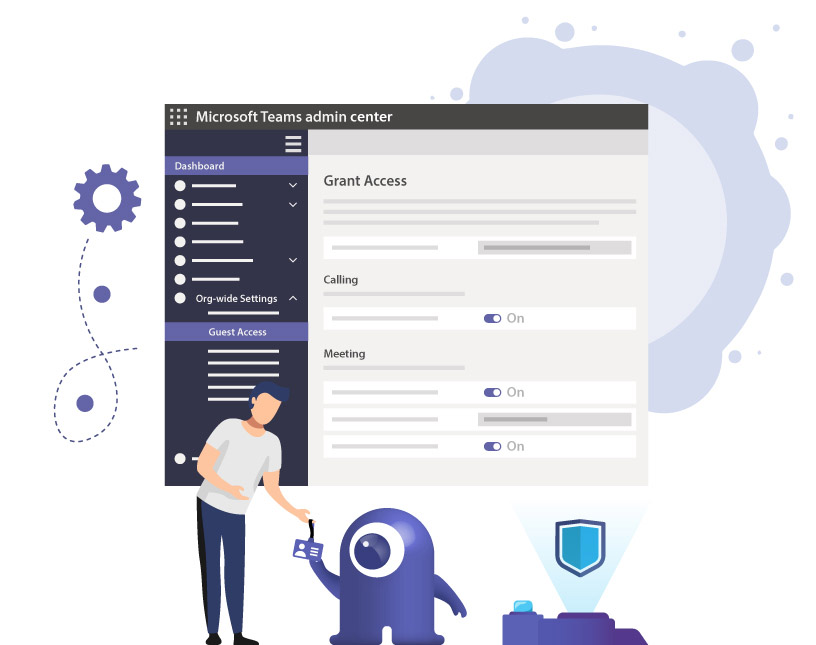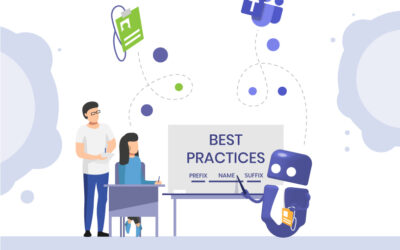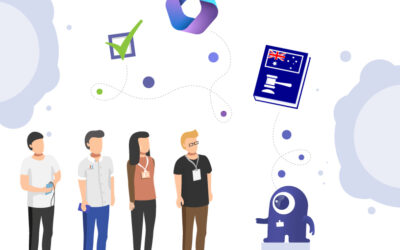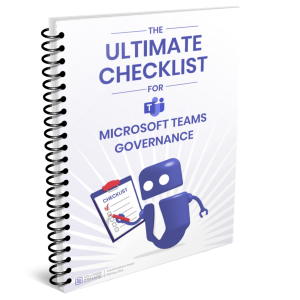-
Pingback: Microsoft Teams Security: Collaboration - Solutions2Share
-
Pingback: Block Guest Access for Specific Teams - Solutions2Share
Enable Guest Access For Microsoft Teams and manage it securely
Why is guest access in Microsoft Teams a risk?
As soon as your users invite external guests to Microsoft Teams, the risk increases:
- Uncontrolled access can compromise your data.
- Compliance violations can occur if guests retain permanent access.
- Lack of transparency makes it difficult to prove who accessed which data during audits.
Many companies activate guest access without first establishing governance rules. The result: data leaks, fines, and increased administrative overhead.
Want to give your employees the ability to collaborate with external users outside your organization, but unsure which option to choose?
In this guide, we will explain the intricacies of Microsoft Teams guest access, covering permissions, settings, and the procedure of adding Microsoft Teams guest users. You’ll learn how to securely enable guest access, configure permissions, and implement automated control with tools such as External User Manager.
Read our case study to find out how international machine manufacturer GROB manages to control guests with External User Manager.
This article also contains easy-to-follow, step-by-step procedures so that you don’t have to face the hurdle in any step of adding new guests to your Microsoft Teams. Microsoft Teams makes collaborating with the right people a lot easier for its customers. It also facilitates the process by providing organizations with several different options for granting access to external users.
Amongst all options, external sharing is the easiest. External sharing grants permission to share files, documents, libraries, lists, and even complete SharePoint Online sites.
But what to do if you want to collaborate with people outside of your organization and across several channels – e.g. communicating via chat or sharing a calendar for coordinating meetings?
You can always invite guest users from outside of your organization to join your Microsoft Teams in such a case. As guest users, these external associates can access your resources, chat with other members, and share files.
In this guide, we will concentrate on how to enable guest access and change guest settings in the Teams Admin Center. In a second blog article, we go into more detail about guest access in Microsoft Teams and explain how to add guest users to Teams.
So let’s dive right in on activating guest access in Microsoft Teams!

What is the difference between guest access and external sharing?
- External sharing: Individual files or folders are shared, usually via OneDrive or SharePoint.
- Guest access: A full user account is created. Guests can participate in chats, edit files and use channels, depending on their permissions.
While external sharing is limited to individual files, guest access allows broad access to Teams. This requires clear governance rules.
What exactly distinguishes a guest user from internal team members? Here is a comparison of the permissions available in each case:
| Microsoft Teams Permissions | Internal Team Member | External Guest User |
|---|---|---|
| Create channels* | ✔ | ✔ |
| Use private chats | ✔ | ✔ |
| Use channel conversations | ✔ | ✔ |
| Create new conversations, edit and delete | ✔ | ✔ |
| Share files in channels | ✔ | ✔ |
| Share files in chats | ✔ | |
| Create meetings, see schedules | ✔ | |
| Invite external users as guests* | ✔ | |
| Create Teams | ✔ | |
| Join public Teams | ✔ |
*These two permission settings are controlled by Team owners. In addition, Microsoft 365 administrators can decide on the features available to guest users. Details on this can be found in our second blog article on this topic, how to add guests to Microsoft Teams.

How do I enable guest access in Microsoft Teams?
To enable guest access in Teams, several permission levels must work together:
- Azure Active Directory: Guest accounts must be allowed here.
- Microsoft Teams Admin Center: Enable settings for guest access.
- SharePoint and OneDrive: Set rules for file sharing.
NOTE: To enable guest access for Microsoft Teams, you need global admin rights.
Next, proceed as follows in the Teams Admin Center:
- In Microsoft Teams admin center, select ➔ Users ➔ Guest access.
- For “Allow guest access in Teams”, select the option “On” in the dropdown menu.
- Configure which features (e.g., calls, meetings, messages) guests are allowed to use.
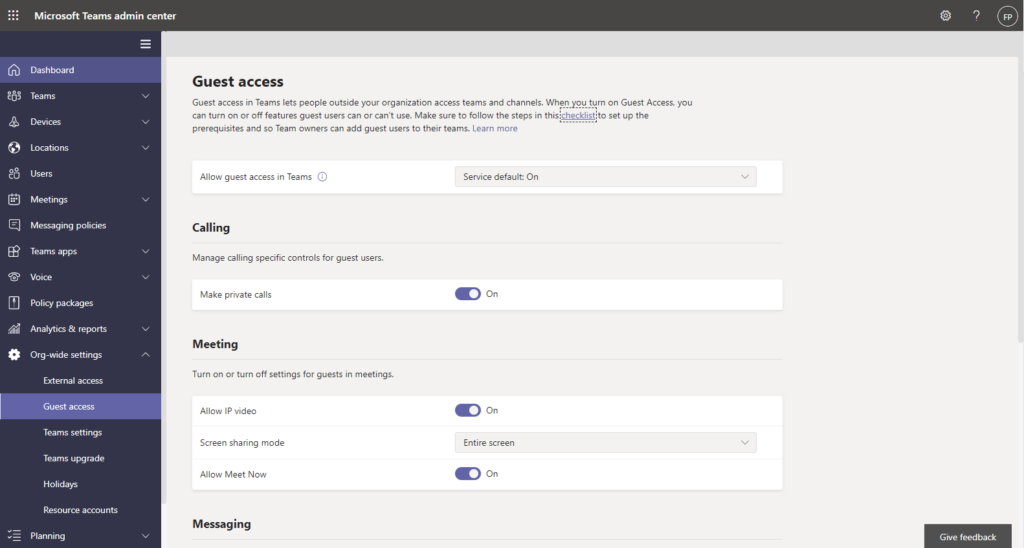
It may take up to 24 hours for the changes to activate.
Practical tip: Document who is authorized to activate guest access and record these specifications in your IT governance policy.
As mentioned earlier, guest access also needs to be activated in Azure Active Directory, Microsoft 365 Groups, and OneDrive / SharePoint Online in order to work in Microsoft Teams. If you use default settings there, our instructions are sufficient to enable guest access.
What permissions should I give guests in Microsoft Teams?
When you have activated guest access for MS Teams, you should next specify precisely what external users with guest access will see and be able to do in your Teams. You can configure these details also in the Teams Admin Center, on the same page where you activated guest access earlier. Here you can now set up permissions for meetings, calls, and messaging for guest users.
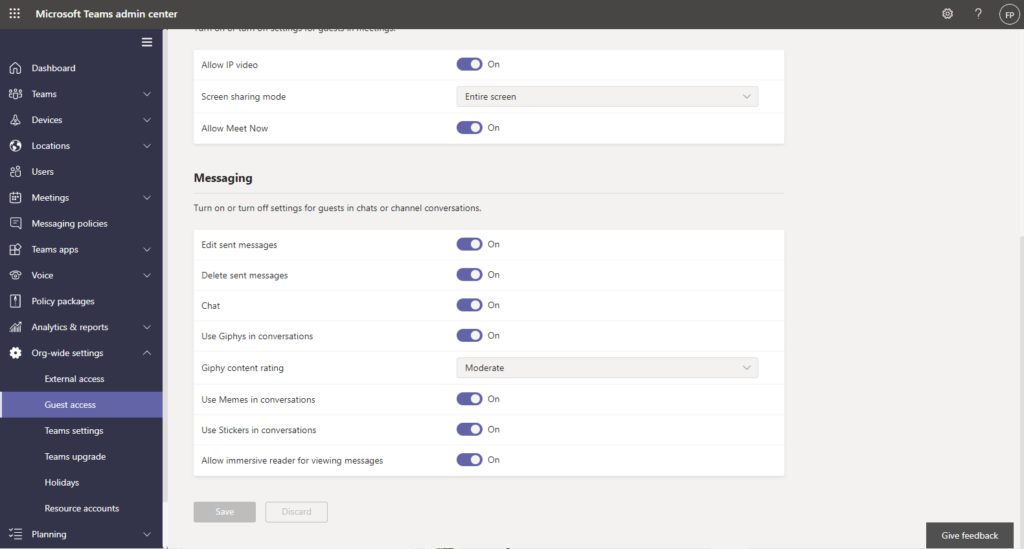
Guests have limited rights in Microsoft Teams by default. You can use the team settings to individually specify whether guests are allowed to use the following features:
- Calling: Make private calls
- Meeting: Video calls
- Meeting: Screen sharing mode
- Meeting: Allow ‘Meet Now.’
- Messaging: Edit sent messages
- Messaging: Delete sent messages
- Messaging: Chats
- Messaging: Use Giphys in conversations
- Messaging: Giphy content rating
- Messaging: Use Memes in conversations
- Messaging: Use Stickers in conversations
- Messaging: Allow immersive reader for viewing messages
Only give guests the rights they absolutely need to collaborate. This reduces risks and keeps you in control.
How do I configure secure settings for calls, meetings, and messages?
In addition to team permissions, you can configure additional settings in the Admin Center:
- Calls: Determine whether guests are allowed to make internal and external calls.
- Meetings: Specify whether guests are allowed to participate in meetings, share their screen, or record content.
- Messages: Define whether guests are allowed to send chat messages, edit, or use GIFs/stickers.
Practical tip: Use these options to find a good balance between effective collaboration and compliance.
How does external file sharing with guests work?
Guests access files in SharePoint and OneDrive. The following applies:
- File sharing follows the settings in SharePoint/OneDrive.
- Admins can specify link types (e.g., “view only,” “editing allowed”) and expiration dates for shares.
- Recommended: Links with expiration dates and clear permissions for better traceability.
What are the risks of incorrectly configured guest access?
- Confidential data remains accessible to former partners.
- Compliance violations result in fines.
- Lack of evidence complicates internal and external audits.
- High manual effort for administrators to control access retrospectively.
How do you automate governance with External User Manager?
Manual management via Entra/Azure AD is prone to errors. Solutions2Share’s External User Manager offers the solution:
- Approval processes: Guest access is requested and reviewed by team owners.
- Automated processes: Access expires automatically after the end of the project or after a deadline.
- Transparency: Dashboards and reports show which guests have access to which teams at any time.
- Compliance evidence: All processes are documented so that audits can be passed without any problems.
Let us show you how it works in a free, personal demo!
Use case: How GROB securely controls guest access
The mechanical engineering company GROB worked with numerous external partners. The problem: Guests were added but never removed. External parties had access to internal data long after the project had ended.
Solution with External User Manager:
- Guests must be requested and approved by those responsible.
- Access expires automatically after defined periods of time.
- Reports give IT full transparency over active guest accounts.
Result: 100% control and compliance with minimal administrative effort.
FAQ: Frequently asked questions about guest access in Microsoft Teams
By default, all team owners. This can be restricted via policies.
Guests have restricted rights by default. Admins can add or remove additional permissions. Here you can find details about the default permissions for guests.
Via the team settings in Microsoft Teams or centrally in Entra / Azure Active Directory.
No, guest access is included in Microsoft 365. However, additional features (e.g., Advanced Audit) require higher-level licenses.
With tools such as External User Manager, which handle workflows, lifecycles, and reports.
Conclusion: Enable guest access securely – with governance
Guest access in Microsoft Teams undeniably facilitates collaboration with partners, customers, and service providers. However, without clear rules, it carries high risks: data loss, compliance violations, unnecessary administrative effort.
Microsoft’s standard features allow you to activate access and set permissions. External User Manager ensures greater security and efficiency: guests are checked, deadlines are automated, and evidence is created.
Book a demo now and learn how you can manage guest access in Teams securely and transparently!
This concludes the explanation on how to set up guest access for Microsoft Teams. Next, we are going to take a detailed look on how to add guest users to Teams and go into details about Microsoft Teams permission settings.


Chief Commercial Officer and Governance Specialist at Solutions2Share
Florian Pflanz has more than 8 years of experience with Microsoft 365 and has supported over 250 workshops on Teams governance.
His focus lies on lifecycle management, provisioning, and compliance requirements in regulated industries.
He shares best practices with IT admins and decision-makers to reduce complexity and strengthen secure collaboration in Teams.
